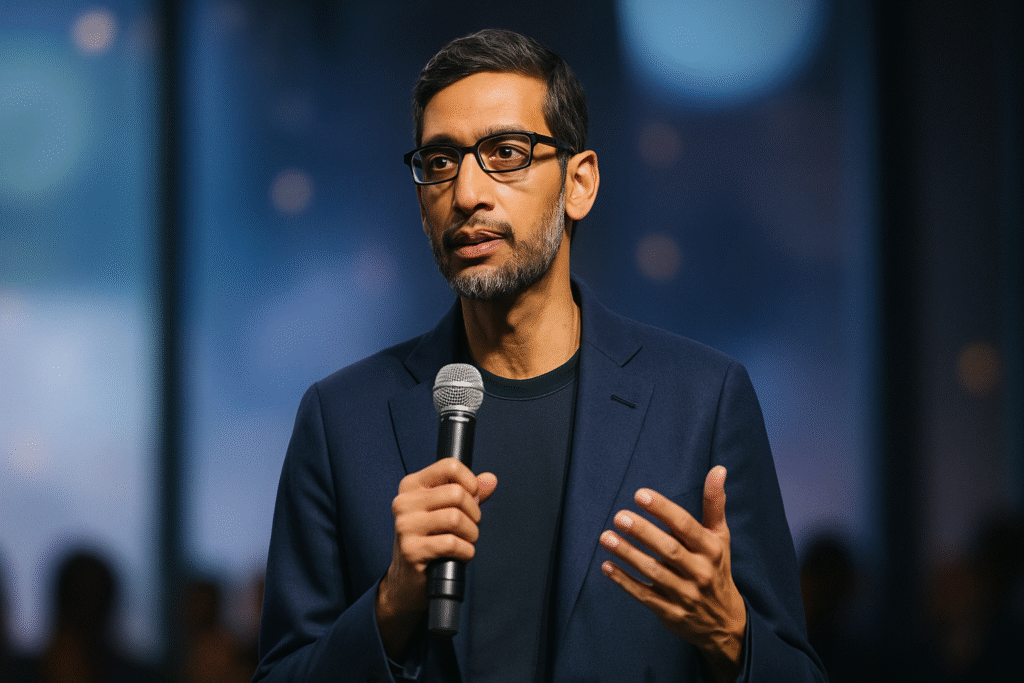A surge in candidates leaning on off-camera AI during virtual coding rounds has pushed Google to add at least one in-person interview for engineering roles, with CEO Sundar Pichai saying face-to-face time helps verify real fundamentals. Other big employers—including Cisco and McKinsey—are doing the same. Meanwhile, Amazon formally asks candidates not to use AI during interviews, and Anthropic has evolved from a blanket ban to a nuanced policy: AI is fine to prepare materials, but live assessments remain human-only unless permitted. The message is clear: remote hiring isn’t going away, but the industry is tightening controls to keep assessments authentic.

Why the pendulum is due to its speed, affordability, and ease of use, virtual hiring surged during the pandemic.
for each side. However, in 2024–2025, recruiters began to report a different issue: candidates using “answer whisper” tools during coding screens, running AI copilots out of frame, and even attempting outright impersonation. These hazards weaken the signal during technical interviews and undermine process credibility. According to research cited by prominent media outlets, interview fraud and identity spoofing are on the rise, and businesses are now concerned that purely digital funnels are too simple to manipulate. The most predictive steps (systems design, debugging, and pair programming) are therefore clearly returning to onsite time, where eye contact, whiteboards, and live follow-ups make cheating much more difficult.
What’s changing at Google
Sundar Pichai recently explained that Google will build in at least one in-person round for engineering and programming roles. The objective is not nostalgia but rather a return to the core principles of computer science, including data structures, algorithms, and real-world debugging, without the use of covert helpers to provide answers. Face-to-face rounds restore confidence in who can actually do the work, Pichai said, discussing the shift in the context of AI reshaping hiring itself and candidate behaviors. A hybrid sequence is to be expected, with effective remote screens at the front and a calibrated onsite where signal quality is most important.
This isn’t just Google:
The Wall Street Journal and Axios reports indicate that Cisco and McKinsey are reintroducing in-person procedures for skill authentication.
as well as identities. The same reasoning holds true for any industry where handling code or high-stakes access requires a high level of trust. Following worries about online cheating in assessments, Deloitte in the UK returned to in-person hiring for graduate positions last year. Rather than being isolated experiments, these represent a systematic reevaluation of hiring risk.
The AI “rules of the room”:
Amazon and Anthropologie, Amazon now specifically cautions applicants against using generative AI in interviews, claiming it is an unfair advantage that prevents testing of
- genuine talent. According to internal guidance released this year, applicants who break the rule risk being disqualified.
- After initially prohibiting AI for applicants, Anthropic changed its policy in July 2025 to allow the use of AI (such as Claude) for resume polishing and preparation, but not for live interviews or take-home exams unless specifically instructed to do so. This is consistent with the increasingly prevalent “AI-as-preparation, not-substitution” norm.
Efficiency vs. integrity, The new balance remote pipelines eliminate scheduling conflicts and expand
the pool of skilled individuals. However, they also increase the area of attack for fraud and answer-coaching in real-time. Businesses are adopting a hybrid approach:
- keep the speed of virtual screens where stakes are reduced, then move to tightly proctored or in-person rounds for signal-critical assessments (design meetings, architect
- your deep dives.
Increasingly common safeguards include identity checks (government IDs, biometric verification), more stringent proctoring, and audit-friendly interview artifacts (recorded code sessions, whiteboard photos).
What this means if you’re previewing shortly:
1) Anticipate a loop that is hybrid. Be prepared to go through several interviews in one day, first on a virtual screen and then on-site. Google made it clear that engineering tracks would be considered for at least one in-person round.
2) Prepare for fundamentals you canExplain out loud, practice using a whiteboard alone to solve problems, ora shared editor. Explain your reasoning; interviewers are assessing more than just the finished code.
3) Understand the AI policy and abide by it. Avoid taking a chance if a company prohibits AI during interviews. Many now permit AI for preparation (such as creating mock questions or improving resumes), but they prohibit it during tests. Find out from recruiters what is kosher.
4) Rehearse systeWithout simply copying and pasting a diagram generator, use MS Design Live to sketch architectures, talk about trade-offs, and quantify constraints.erator’s output.
5) Bring proof practice. A tidy, properly documented repository or portfolio is the best way to show practical expertise.ated answer can.
6) Soft skills matter more face-to-face. It is simpler to judge clarity, listening, and cooperative problem-solving.ge face-to-face. Consider the onsite as a team-building activity that lasts all day.
The bigger picture: AI-native hiring without loSing the human No one is completely giving up on AI—people still use it for scheduling, sourcing, creating rubrics.
as well as constancy. The cutting edge is responsible augmentation: employing AI to lessen administrative burden and bias while retaining human judgment at the critical junctures where trust and authenticity are at risk. A sustainable balance that acknowledges AI’s value without allowing it to take the place of competence is indicated by policies like Anthropic’s (AI permitted for preparation, not for live performance).
Conclusion
The return of the onsite isn’t about going backward; it’s about raising the reliability of the hiring signal in an AI-ssaturated world. If you are a candidate, embrace it by developing the muscles necessary to perform without a net and viewing AI as your coach rather than a substitute so that when the whiteboard marker lands on your hand, your abilities arendeniably yours.
Disclaimer
This article summarizes publicly reported hiring policies as of August 2025. Practices may change. Images are illustrative/AI-generated; no affiliation or endorsement is implied. Not HR or legal advice.